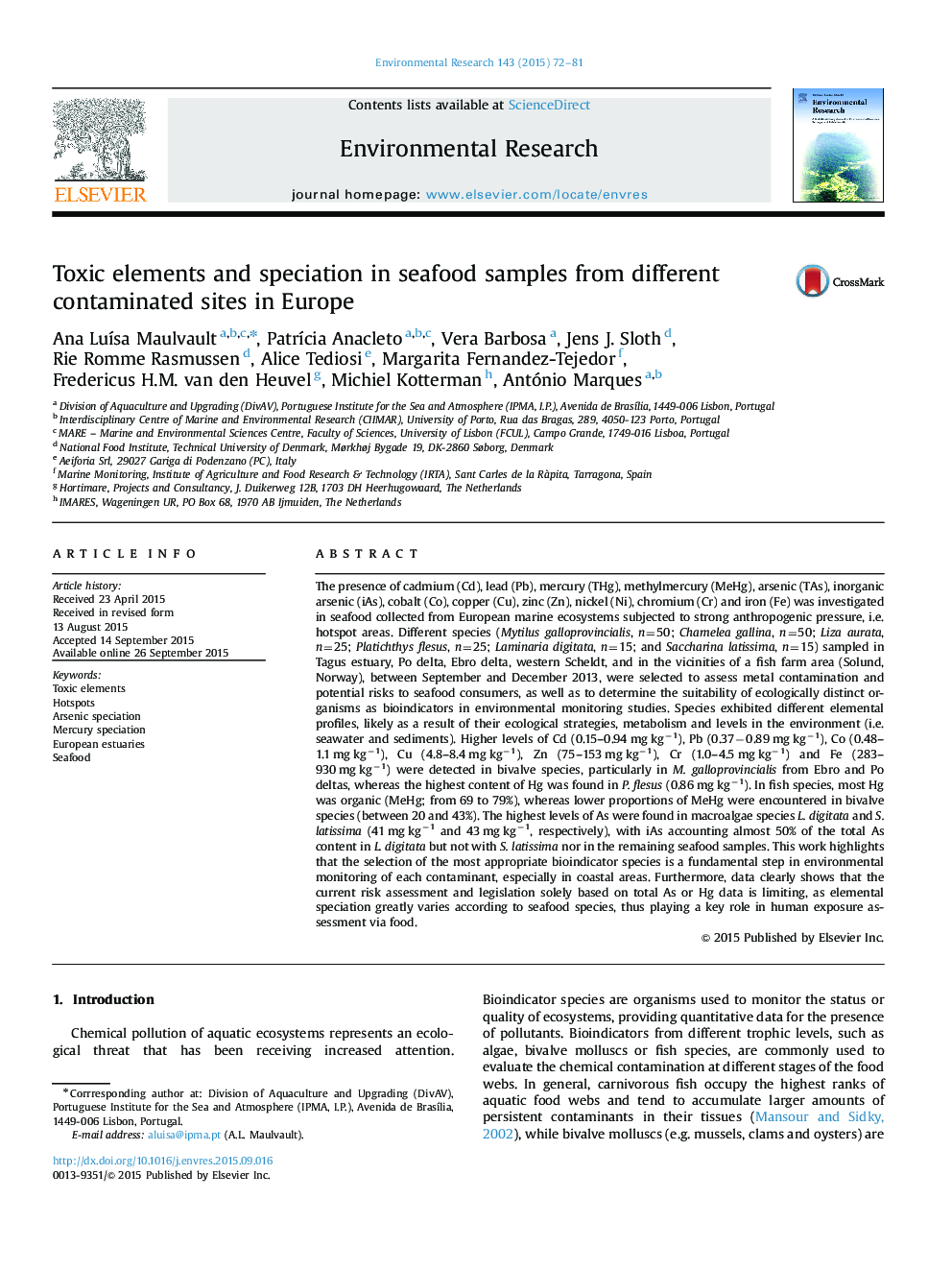| کد مقاله | کد نشریه | سال انتشار | مقاله انگلیسی | نسخه تمام متن |
|---|---|---|---|---|
| 4469685 | 1314301 | 2015 | 10 صفحه PDF | دانلود رایگان |
The presence of cadmium (Cd), lead (Pb), mercury (THg), methylmercury (MeHg), arsenic (TAs), inorganic arsenic (iAs), cobalt (Co), copper (Cu), zinc (Zn), nickel (Ni), chromium (Cr) and iron (Fe) was investigated in seafood collected from European marine ecosystems subjected to strong anthropogenic pressure, i.e. hotspot areas. Different species (Mytilus galloprovincialis, n=50; Chamelea gallina, n=50; Liza aurata, n=25; Platichthys flesus, n=25; Laminaria digitata, n=15; and Saccharina latissima, n=15) sampled in Tagus estuary, Po delta, Ebro delta, western Scheldt, and in the vicinities of a fish farm area (Solund, Norway), between September and December 2013, were selected to assess metal contamination and potential risks to seafood consumers, as well as to determine the suitability of ecologically distinct organisms as bioindicators in environmental monitoring studies. Species exhibited different elemental profiles, likely as a result of their ecological strategies, metabolism and levels in the environment (i.e. seawater and sediments). Higher levels of Cd (0.15–0.94 mg kg−1), Pb (0.37−0.89 mg kg−1), Co (0.48–1.1 mg kg−1), Cu (4.8–8.4 mg kg−1), Zn (75–153 mg kg−1), Cr (1.0–4.5 mg kg−1) and Fe (283–930 mg kg−1) were detected in bivalve species, particularly in M. galloprovincialis from Ebro and Po deltas, whereas the highest content of Hg was found in P. flesus (0.86 mg kg−1). In fish species, most Hg was organic (MeHg; from 69 to 79%), whereas lower proportions of MeHg were encountered in bivalve species (between 20 and 43%). The highest levels of As were found in macroalgae species L. digitata and S. latissima (41 mg kg−1 and 43 mg kg−1, respectively), with iAs accounting almost 50% of the total As content in L. digitata but not with S. latissima nor in the remaining seafood samples. This work highlights that the selection of the most appropriate bioindicator species is a fundamental step in environmental monitoring of each contaminant, especially in coastal areas. Furthermore, data clearly shows that the current risk assessment and legislation solely based on total As or Hg data is limiting, as elemental speciation greatly varies according to seafood species, thus playing a key role in human exposure assessment via food.
Journal: Environmental Research - Volume 143, Part B, November 2015, Pages 72–81
